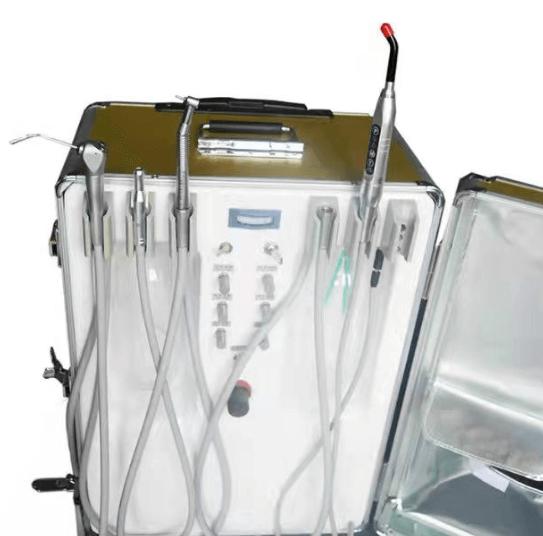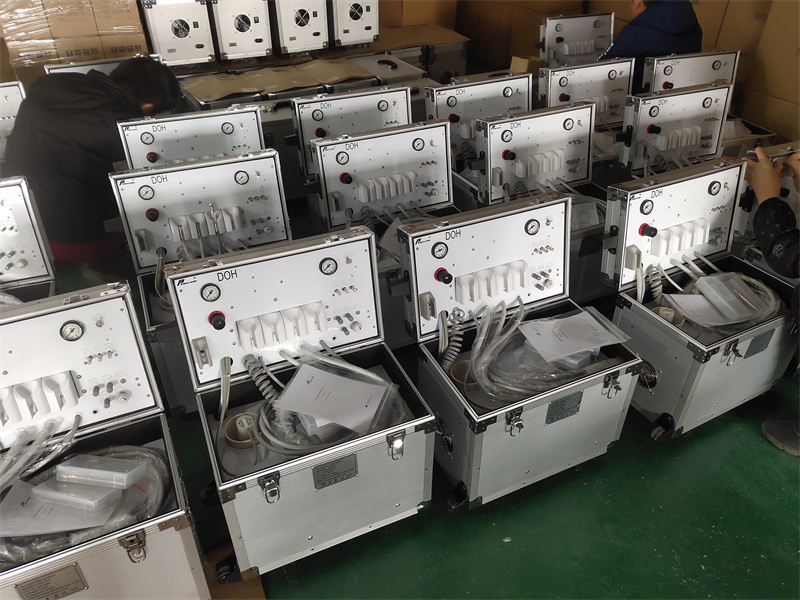The dental handpiece stands as a cornerstone tool in the practice of dentistry, facilitating a wide array of procedures that range from routine cleanings to intricate surgeries.
This handheld device, with its diverse attachments and capabilities, plays a pivotal role in maintaining oral health and performing intricate dental work with precision and efficiency. In this post, the author would would give a brief introduction to the dental handpiece.
A dental handpiece is a sophisticated, motor-powered tool used extensively in dentistry for a variety of procedures. It's essentially a handheld instrument that dentists and dental hygienists use to perform tasks such as cleaning, polishing, drilling, and shaping teeth, among other dental procedures.
These handpieces are designed to hold various attachments like burs, polishers, or drills, allowing for versatility in dental treatments. Dental handpieces can be categorized into different types based on their power source and specific functions:
●Air-Driven Handpieces: These are powered by compressed air and are commonly used for routine dental procedures like cleanings, simple fillings, and basic tooth preparations.
●Electric Handpieces: Powered by electricity, these handpieces offer consistent torque and speed control. They are preferred for more intricate dental work requiring precision and often used in procedures such as root canals, crown placements, or complex restorations.
●Surgical Handpieces: Specifically designed for surgical procedures, these handpieces have higher torque and are capable of handling more complex dental surgeries such as implant placements, extractions, and bone shaping.
Dental handpieces have evolved significantly over time, incorporating advancements in technology to improve performance, reduce noise and vibration, and enhance patient comfort. They come with various speed settings, ergonomic designs, and features aimed at optimizing efficiency and accuracy during dental procedures.

Dental handpieces are essential tools in various dental procedures due to their versatility, precision, and efficiency. In this section, the author would give an introduction about the uses of the dental hanpiece.
These involve treating the interior of the tooth, like root canals. Specialized handpieces, often with smaller tips, are used to access and clean the narrow canals within the tooth, removing infected tissue and shaping the canal for filling.
Dental implants require careful preparation of the implant site in the jawbone. Handpieces with specific attachments enable dentists to precisely create the space and shape necessary for the implant, ensuring its proper placement.

Handpieces play a role in orthodontic treatments by assisting in procedures like adjusting orthodontic appliances, reshaping brackets, or modifying wires to facilitate tooth movement.
For gum-related treatments or surgeries, specialized handpieces equipped with specific tips are used to access and treat periodontal pockets, remove diseased tissue, or shape the bone around the teeth.
In procedures such as veneer preparations or cosmetic contouring, dental handpieces with fine, precise burs are employed to shape and refine the teeth for aesthetic purposes.
Handpieces can be utilized in some TMJ procedures to smooth or reshape surfaces of the joint or surrounding structures to improve function and reduce discomfort.
Beyond just preparing teeth for fillings, handpieces are crucial in removing decayed portions of teeth, shaping cavities for fillings or other restorations, and ensuring the restoration fits perfectly.
Overall, the dental handpiece plays an important role in most dental treatments, because it can greatly help the dental treatments. And, each type of dental handpiece serves different purposes. Then, CX is a professional handpiece manufacturer, providing an array of dental handpieces to meet different dental requirements.